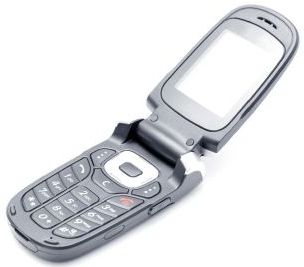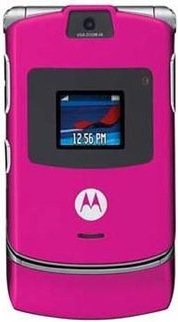Feature Phone Death!
The feature phone actually does still exist, however, it has been on a fast decline to extinction since smartphones became pervasive AND inexpensive options became available. When prepaid wireless
first launched, it was all about the feature phone, and it took quite
some time before smartphones became available on prepaid. Now
more than ever, people ask "What exactly
are feature phones?". It's essentially
the opposite of a smartphone. While it has an operation
system (as every phone must have), it's not an open platform.
Think about the classic candy bar phones, or flip phones.
Aside
from making phone calls, they could store contacts, display calendars,
access the Internet (via specially formatted WAP pages), and even had
applications to monitor stocks,
weather, movies, etc.
inexpensive options became available. When prepaid wireless
first launched, it was all about the feature phone, and it took quite
some time before smartphones became available on prepaid. Now
more than ever, people ask "What exactly
are feature phones?". It's essentially
the opposite of a smartphone. While it has an operation
system (as every phone must have), it's not an open platform.
Think about the classic candy bar phones, or flip phones.
Aside
from making phone calls, they could store contacts, display calendars,
access the Internet (via specially formatted WAP pages), and even had
applications to monitor stocks,
weather, movies, etc.However, the operating systems powering these feature phones are closed systems. Unlike today's smartphones, they have limited hardware (i.e. processing power and memory), and features could only be added by the OEMs (Original Equipment Manufacturers) that owned and operated these platforms. Let's not forget, though, that these phones evolved considerably, and allowed us to have access to more and more features as technology and these operating systems evolved.
The modern smartphone, however, has far exceeded the capabilities of even the most capable feature phones. So why did the feature phone not die immediately following the availability of smartphones? When smartphones first came onto the scene, they were very expensive, and arguably lacked speed to make them really desirable and affordable. In fact, they were buggy, and added unnecessary complexity to simple functions. Now that the price of smartphones has come down dramatically, and even the least expensive ones are extremely capable, people (and carriers) have come to expect the flexibility that such phones offer.
In addition, feature phones offered a different user experience across phones and across providers. So if you changed phones from a Motorola to a Samsung, you'd need to virtually re-learn how to accomplish basic tasks, and there was minimal user customizability to suit our own personal needs. Manufacturers did try to keep some common logical flow, though it certainly was never a great transition, and even transferring contacts between phones could be a pain, if not impossible. I remember having to manually re-enter my contacts each time I got a new phone!
Yes, in the later years there were export and import features that made such a transition less painful, however, it was never as simple as switching between smartphones, which now simply involves logging into your Google account on your new phone (or other supported service). All-in-all, open platforms like Google Android and Apple iOS are far more powerful, capable, and affordable than ever before.
My One Gripe!
I do have to note that now that smartphones have largely replaced feature phones, I have noticed that making a simple phone call on a smartphone can be somewhat irritating, often taking more steps, and overall delivering a slower
 experience
than a feature phone. Improvements on quickly accomplishing
basic tasks needs to continue to improve. That said, the
reality is that the current generation doesn't even know what a feature
phone is! Although they still do exist, they really are
largely dead, and no one is mourning the loss!
experience
than a feature phone. Improvements on quickly accomplishing
basic tasks needs to continue to improve. That said, the
reality is that the current generation doesn't even know what a feature
phone is! Although they still do exist, they really are
largely dead, and no one is mourning the loss!Also, some people do complain that smartphones are simply too complicated and overwhelming. Not everyone enjoys tinkering with the options, and dealing with software bugs as we've sadly come to expect on our computers, tablets, and smartphones. Many people still just want to make phone calls, send a few text messages, and check the odd thing here and there on the Internet with no fuss and no hassle. Truthfully, smartphones don't always seem so smart when trying to accomplish simple tasks.
So What's The Answer To This Complexity?
People like simplicity. Apple has proven this time and time again by selling inferior, less capable products at elevated prices. Why do people buy into their products? Because no matter what the product, they're simple to use. An iPhone may not offer the same degree of customizability as an Android device, but what it does do, it does really well, and things just feel seamless. There's absolutely no doubt that people flock to such a great experience, even though certain functionality is ultimately sacrificed.
Conclusion
The death of the feature phone is essentially here; there's no doubt about that. Open source operating systems like Android will continue to evolve to provide simplified interface options (ex. Samsung has an "Easy" mode with simplified features, and larger buttons and icons). We'll also see app and launchers on the Google Play store that enable simplified interfaces. Kids mode is a good example of an implementation along these lines.
Home
›
Prepaid Smartphones
›
Feature Phone Death
| Be Heard! Let prepaid wireless providers know what you want; fill out the survey now. |



Comments
Have your say about what you just read! Leave a comment in the box below.